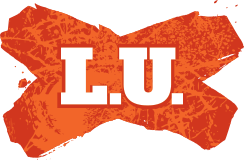Under the Thumb
Whatever women do they must do twice as well as men to be thought half as good.
- Charlotte Whitton
Charlotte Whitton’s famous words serve to not only echo the struggles of society, but may prove to haunt rugby league in its failure to accept women at the management level.
Gender discrimination in the administration of rugby league is potentially more damaging to the game than the unifying forces of Super League, players with idle time, and Willie Mason in front of a microphone.
As sport has become increasingly commercialised, the need for diversity is obvious: new ideas, new attitudes, and a new direction that could ultimately be the difference between survival and extinction.
To its detriment, rugby league has been unable to adopt diversity. The dearth of women in executive positions – or even positions of relative importance - suggests something is seriously wrong.
In recent years, Australia’s workplace structures and practices have come under scrutiny. Changes to collective bargaining agreements, working arrangements, and anti-discrimination legislation are all symptoms of this.
Unfortunately, these changes - brought about slowly but surely - have done little to reform the existing institutional norms. Discrimination and inequality are still rampant - including the business and sports sectors. The ‘old boys’ network lives on.
Just over eight per cent of Australia’s executive managers are women, according to the first census on this topic in Australia. This figure is roughly the same for women holding board director positions.
And rugby league isn’t immune to this inequality. In fact, given the frequent bureaucratic nature of rugby league and its ingrained culture, the figures would be less appealing.
Part of the problem lies in the league’s culture of looking after their own. Retiring players who spent their salad days half-seas-over – as opposed to planning their future - quickly realise they need a steady income to sponsor their spouse’s Botox treatment. The entrenched views of mateship as well as the esteem Australian athletes are held means an ex-player getting onto the club’s managerial payroll is painless.
In fact, the perception of women in rugby league suffers from an image problem. The current reference group appears to be a mix of pseudo-famous girlfriends of players, cheerleaders, and the latest flavours of the month.
Those currently popularised in the rugby league domain, appear to be doing the women’s cause more harm than good. The
Manly Angels – presumably a variation on the
Charlie’s Angels film theme or merely a naming arrangement between the Manly Club and the local escort agency – are one such group. Consisting of Sarah O’Hare, Louis Sauvage, and Shelley Taylor-Smith, their role at the Club is obscure. Would-be journalist Ray Chesterton called it part of an “innovative club creating new ideas”. I say: if the best clubs can do is tie themselves in with a few semi well-known women to shift more units, they are in deeper shit than I thought.
Given the stifling traditions of clubs and associations, the complete lack of role models for women executives in rugby league means there is little light at the end of the tunnel.
The end result for an aspiring female executive in rugby league: they’re drawn to sectors where they feel welcome. Many of them have invariably forged successful, high-paying careers for themselves, grilling Yours Truly at various job interviews over the years.
When pressed for a list of creditable women rugby league executives (or even creditable female league figureheads for that matter), I couldn’t think of one. While I tend to think of this as reinforcing my point, rather than reinforcing the destructive nature of illegal substances on human memory, the question resides: where are all the women?
This is not to say women executives in rugby league are non-existent. It’s just that the current representation is disproportionate. Of those who do make it, they fail to reach the very senior positions such as CEO.
Any resolution to gender discrimination – or any discrimination of the loathed type – will be achieved through change.
This change certainly will not happen by denying the problem exists.
This change will not happen through token job appointments – they are fraught with danger, end up doing the rugby league product serious damage, and eventually result in a lose-lose situation.
The only positive, significant change will come through strong leadership; creating circumstances that not only increase the yield of rugby league in Australia, but also promote the sport as having positive impacts on society – something it currently sorely lacks.
Sources:
* Searching for a fort in a Storm -
http://www.oneeyedeagle.com/News.asp?NewsID=1901
* The Fairer Census – Sydney Morning Herald, November 27, 2002
* Bon Mots Archives - alohi.ucdavis.edu/~len/Fray/Bon_Mots/Archive/99_09.html
Word count: 746




